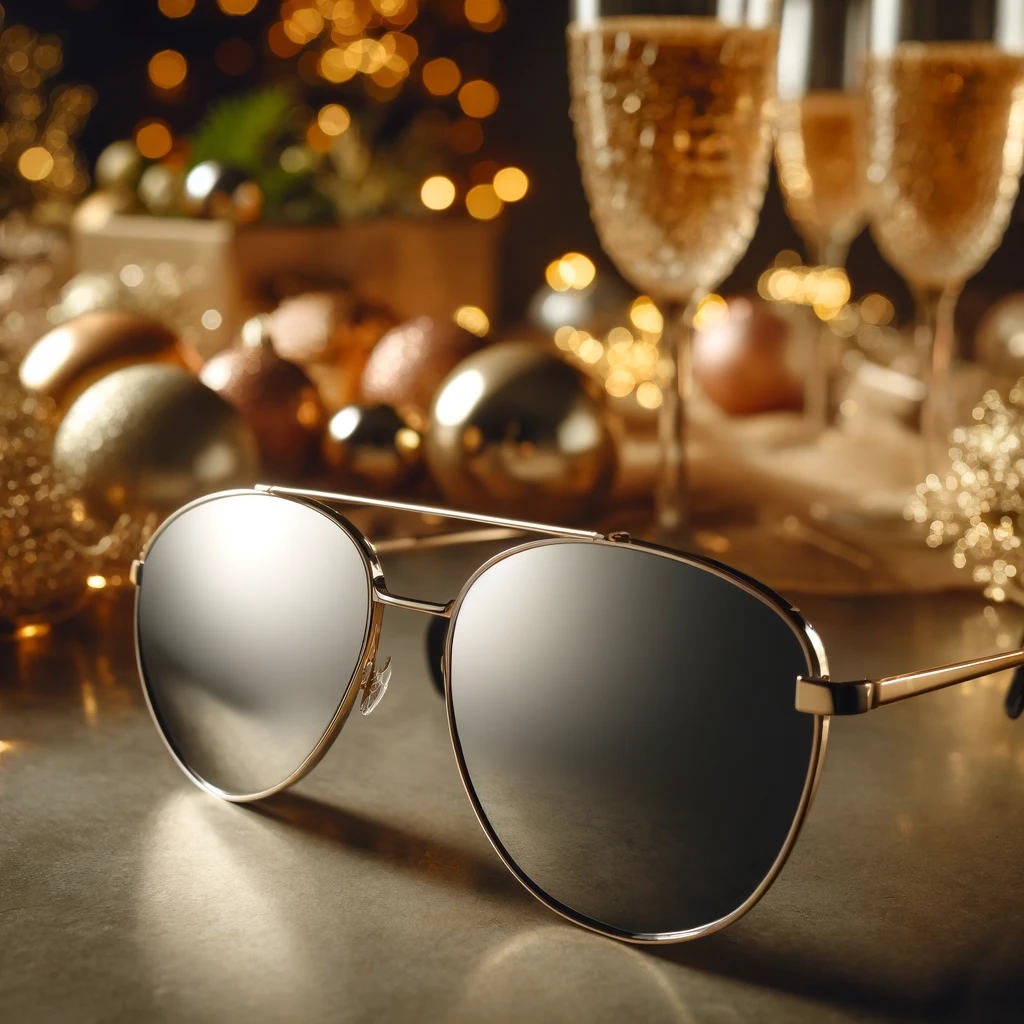
The core function of polarized sunglasses is to filter out chaotic light through polarizing film technology, allowing only light waves in specific directions to pass through, thereby significantly reducing glare interference. Its applicable scenarios need to be comprehensively judged in combination with optical principles and actual demands. The following is an analysis from three dimensions: environmental characteristics, activity types, and special requirements:
1. Strongly reflected light environment
Water surface
In scenes such as lakes, oceans and rivers, the sunlight reflected from the water surface can cause intense glare, leading to blurred vision or even temporary blindness. Polarizing filters can filter out over 90% of the reflected light from the water surface, making underwater scenes (such as schools of fish and reefs) clearly visible. They are suitable for water sports like fishing, sailing, and kayaking.
Snow environment
The reflectivity of snow to sunlight is as high as 80% to 90%, which can easily cause « snow blindness ». Polarizing filters can reduce the intensity of glare in snow and enhance the recognition of terrain undulations at the same time. They are essential equipment for winter sports such as skiing and mountain climbing.
Asphalt road surface
The mirror-like reflection light produced on the road surface under high temperatures can interfere with the driver’s vision. Polarizing filters can reduce such glare and enhance driving safety, especially suitable for long-distance driving or driving in high-altitude areas.
2. High-intensity lighting scenes
Beach vacation
The superimposition of the dual reflected light from the beach and the seawater can easily lead to visual fatigue. Polarizing lenses not only filter out glare but also reduce the overall light intensity through dark lenses, protecting the retina from ultraviolet damage and enhancing the comfort of viewing at the same time.
Plateau area
The increase in altitude leads to the thinning of the atmosphere and a significant enhancement of ultraviolet intensity. The polarizing lens combined with the UV400 protection function can effectively block UVA/UVB, reducing the risk of cataracts, macular degeneration and other diseases, and is suitable for outdoor activities such as hiking and cycling.
Desert crossing
The diffuse reflection of sunlight by sand grains and the combined effect of ground heat radiation can easily cause dryness and burning pain in the eyes. Polarizing lenses can reduce light pollution and at the same time alleviate the risk of foreign objects getting into the eyes through windproof design.
3. Activities with high requirements for visual accuracy
Driving scene
Polarizing filters can eliminate the reflected glare from oncoming vehicle headlights, wet roads and glass curtain walls, enhancing driving safety at night and in the rain. It is recommended to choose light gray or brown lenses to maintain accurate identification of the colors of traffic lights.
Sports competition
In sports such as golf, baseball and tennis, the reflection on the surface of the ball or the background light of the court may interfere with the judgment of athletes. Polarizing filters can enhance contrast, making the trajectory of the sphere clearer, and at the same time reduce the impact of squinting movements caused by strong light on technical performance.
Professional photography
Photographers often need to look directly at strong light sources (such as backlight or water surface reflection) through the viewfinder. Polarizing filters can be used as filters to reduce the amount of light entering the lens and control reflection, assisting in creative shooting.
4. Special health needs
Light-sensitive population
Patients with migraines, cataract surgery, corneal damage, etc. have a lower tolerance to strong light. Polarized glasses can create a soft visual environment, relieve eye discomfort, and reduce the frequency of light-induced headache attacks.
Child protection
Children’s lenses have high transparency, and the risk of ultraviolet penetration is greater. Polarizing lenses combine elastic frames with anti-drop designs to provide long-lasting protection during outdoor activities. However, it is important to note that the light transmittance of the lenses should meet the standards for children’s eyes (it is recommended to choose Category 3 lenses with a light transmittance of 8% to 18%).
5. Scenario reminder not applicable
Low-light environment
Using polarizing filters on cloudy days, indoors or at night may cause the field of vision to be too dark, increasing safety risks.
LCD screen interaction
Polarizing filters may interfere with the display effect of liquid crystal screens on devices such as car navigation systems, ATMs, and mobile phones, causing text ginkgo or color distortion.
Occupational Restrictions for Pilots
The aviation industry stipulates that pilots are not allowed to wear polarizing glasses as they may affect the recognition of dashboard reflections and in-flight signal lights.
Purchase and usage suggestions
Lens color selection
The grey lenses maintain color authenticity and are suitable for driving. Brown lenses enhance contrast and are suitable for water sports. Yellow lenses enhance clarity in dim environments, but they have relatively weak UV protection and should be used with caution in strong light scenarios.
Methods for identifying authenticity
Align the lens with the LCD screen and rotate it slowly. If the picture shows alternating light and dark changes, it proves that it has a polarizing function. At the same time, it is necessary to check whether the UV400 or 100% UV protection label is marked.
Maintenance precautions
Avoid wiping the lenses with clothes to prevent scratching the polarizing film. When stored for a long time, a dedicated lens case should be used and kept away from high temperatures and corrosive substances.
Polarized sunglasses are irreplaceable in strong light, reflected light and high-precision visual scenes by eliminating glare interference. Consumers should choose the appropriate type of lenses based on their actual needs and pay attention to avoiding their limitations to achieve the best balance between functionality and experience.
